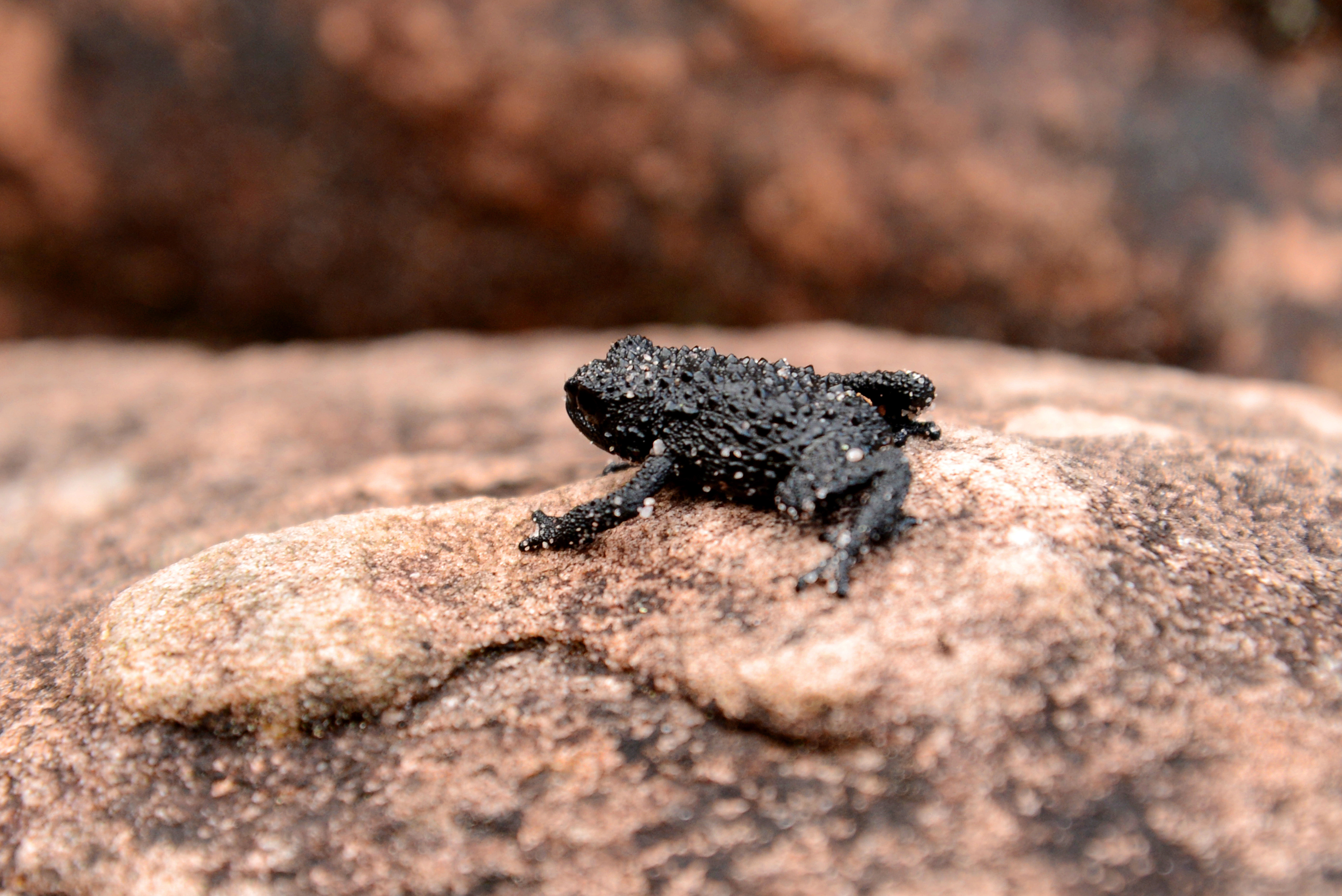Pebble toad
(Oreophrynella nigra)

Description
Oreophrynella nigra, or pebble toad, is a species of toad in the family Bufonidae. It is endemic to the Guiana Highlands in Bolívar State, Venezuela, and known from two tepuis, Kukenan-tepui and Yuruani-tepui, both belonging to the Eastern Tepuis. It is a small species of toad: males measure 16.5–23.5 mm (0.65–0.93 in) and females 20.4–30 mm (0.80–1.18 in) in snout–vent length. When threatened, the toad folds its limbs under its body, tucks its head in and tenses in a ball shape. If on an incline (this is how it gets its name), this causes it to roll down the slope, escaping the attention of its predator, and looking like a dislodged pebble. Its cryptic black and dark grey coloring that may appear as dark navy blue to some blends with its sandstone habitat. Its natural habitats are rocks and peat bogs in montane tepui environments at elevations of 2,300–2,700 m (7,500–8,900 ft) asl. It is classified as vulnerable because of its apparently restricted range. This toad was featured on a BBC series, Life, pursued by a tarantula spider. Oreophrynella, commonly known as bush toads, is a genus of true toads native to the tepuis of southern Venezuela and adjacent Guyana. The distribution of some species is restricted to a couple of tepuis or even a single tepui, as in the case of Oreophrynella weiassipuensis, which occurs on Wei-Assipu-tepui. Species of the genus Oreophrynella are small frogs, less than 26 mm (1.0 in) in snout–vent length. They are characterized by opposable digits of the foot, dorsal skin that bears tubercules, and direct development (i.e., there is no free-living larval stage). The presence of opposable digits, unique among bufonids, in combination with an extension of the interdigital integument and the relative length/orientation of the digits, is likely to be an adaptation to facilitate life on rocky tepui summits and an exaptation to arboreality. The genus also displays cranial simplification in the form of cranial fontanelles and absence of the quadratojugal, which may be driven by a reduction of developmental costs, increase in flexibility, and reduction of body weight. The cranial simplification combined with the shortening of the vertebral column and shift towards a partly firmisternal girdle may be adaptations to the peculiar tumbling behaviour displayed by Oreophrynella.
Taxonomic tree:







